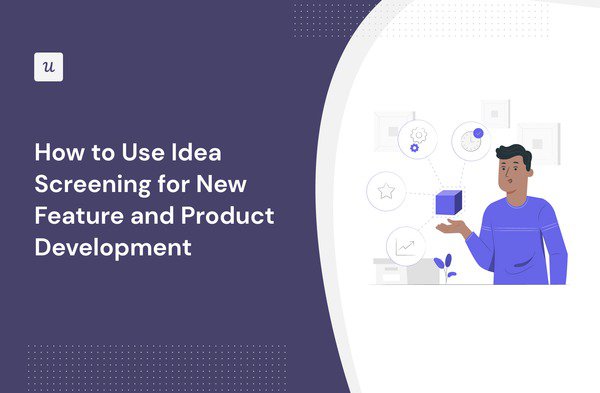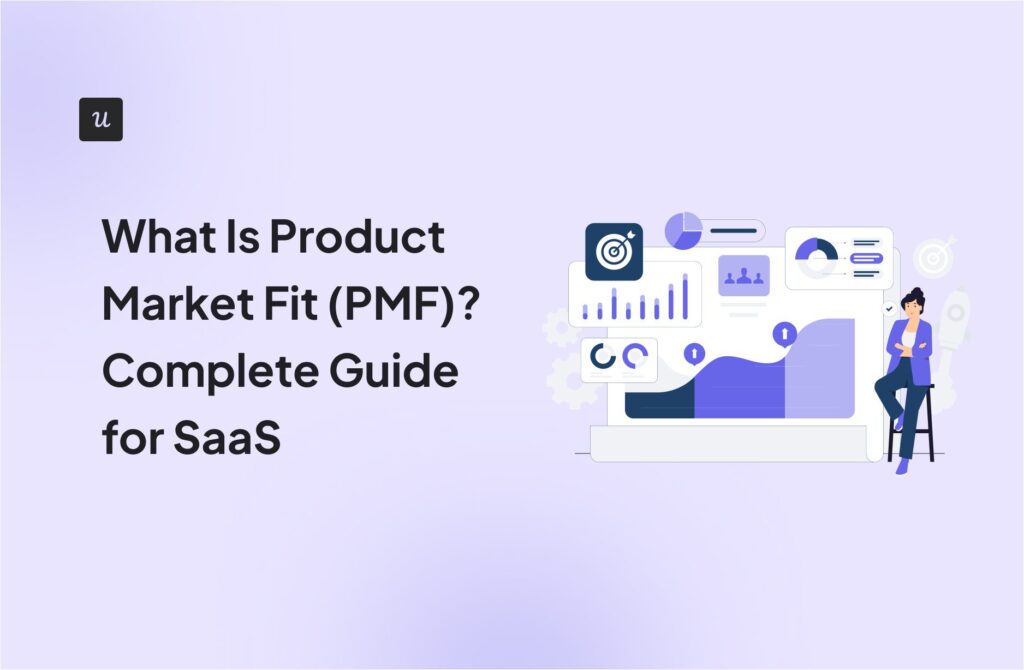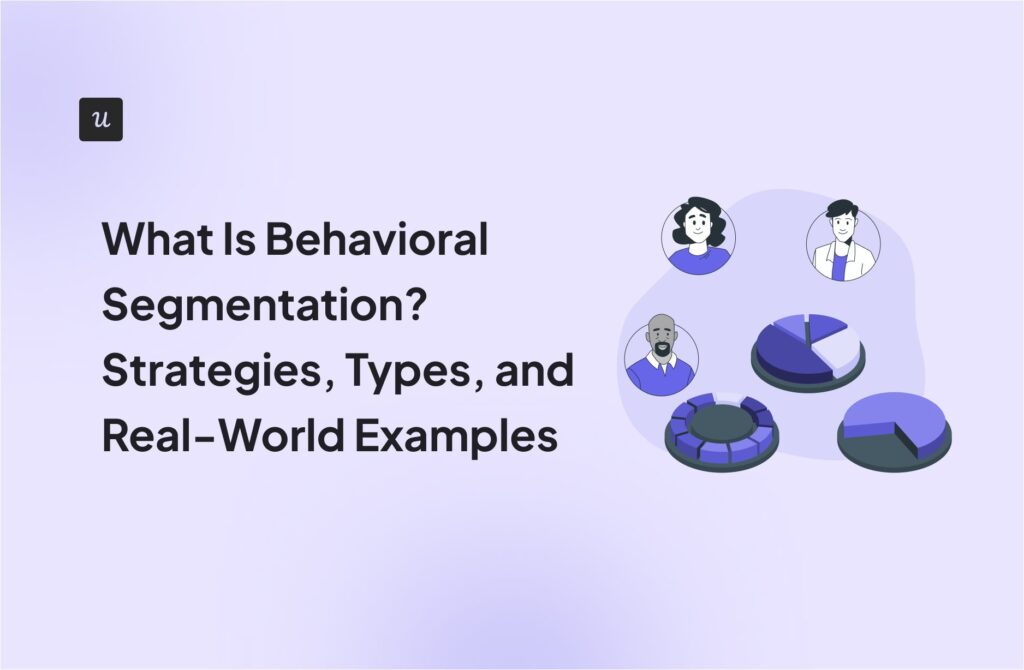
Why do you need idea screening to build successful products?
That’s one of the questions this article answers. More importantly, we show you how to screen your feature and product ideas effectively.
Let’s dive in!
Try Userpilot Now
See Why 1,000+ Teams Choose Userpilot

What is idea screening?
Idea screening is the process of evaluating and vetting product or feature ideas against pre-defined criteria, like market demand or technical feasibility.
It aims to choose and prioritize ideas that resonate well with the target audience and allow the organization to achieve its business goals.
Idea screening takes place early in the new product development process, during the ideation stage and just before concept development.
Idea screening vs. idea generation
Both idea generation and idea screening take place during the product ideation stage.
Idea generation is the initial phase where teams define problems and produce ideas, solutions, or concepts to address them.
The purpose of idea generation is to generate as many ideas as possible without evaluating their viability or feasibility.
Idea screening follows.
It involves filtering the generated ideas to identify those with the highest potential for success.
Its primary goal is to narrow down the list of ideas and focus on those that align with the organization’s goals, resources, and market needs.
Why is the idea screening process important?
There are several reasons not to skip idea screening.
First, the process helps you ensure that your ideas are aligned with your product vision and strategic goals.
Second, it’s an effective risk management tactic. By assessing ideas against predetermined criteria, you can identify risks and challenges. Based on that, you can develop adequate mitigation strategies or shelf the idea, for example, if it’s not financially or technically feasible.
Moreover, idea screening allows you to allocate your resources to ideas that are most likely to succeed. Thanks to it, you avoid investing money, time, and energy in ideas that won’t help you achieve your goals.
Last but not least, evaluating ideas against market criteria helps SaaS businesses identify concepts that are likely to meet customer needs and preferences. This is crucial for developing products or services that have a strong market demand.
How to incorporate idea screening in the new feature and product development process?
Overall, idea screening isn’t a complex process. However, as always, the devil’s in the details. To make the process effective, you have to approach it in a structured and methodical way.
Here’s how you do it, step by step.
1. Brainstorm feature and product ideas to develop
The first step is gathering ideas for screening.
They can come from different sources, like customer requests or customer-facing teams.
Or idea-generation sessions.
Popular idea-generation techniques include:
- Brainstorming – a group technique where participants are encouraged to come up with as many diverse ideas as possible, without any filtering or criticism.
- Mindmapping – a technique that helps organize ideas and fosters non-linear thinking by creating a visual representation of ideas, starting with a central concept and branching out into related thoughts and associations.
- SCAMPER Technique – a technique to spark creativity by prompting participants to modify existing ideas. The acronym stands for Substitute, Combine, Adapt, Modify, Put to another use, Eliminate, and Reverse.
- Reverse Thinking – a technique that involves flipping the problem and looking for its causes rather than solutions.
- Storyboarding – commonly used in UI/UX and product design, the technique involves creating a visual narrative or sequence of images representing ideas or solutions.

2. Define the criteria for effective idea screening
Choosing relevant criteria is essential for successful screening. This will reflect your product goals and organizational culture.
Some examples include:
- Market demand – How saturated is the market? Is there any competition? Do customers need it?
- Willingness to pay – Are there enough people ready to buy the product? How much can they pay?
- Target users – Will it make your offerings more attractive to existing customers? Is it going to attract new ones?
- Company vision – Is the product idea aligned with your organizational vision, business goals, and branding?
- Scalability – How is it to duplicate, maintain, and support? Is it likely to drive growth into the future?
- Impact – What impact will the idea have on your stakeholders, organization, and customers?
3. Conduct qualitative and quantitative research on your target audience
To make reliable idea screening decisions, they need to be data-driven.
To get valid and objective data, use a range of customer research techniques.
Interviews/focus groups
Interviews and focus groups are an excellent source of qualitative feedback.
Even when conducted remotely, they allow researchers to develop a connection with the participants and give them the flexibility to drill down on ideas that come up.
The challenge is recruiting interviewees and scheduling the sessions.
If you already have a product in place, use your analytics tool to select a user segment with a relevant use case and reach out to them with an in-app message, like a modal.
If you’re only starting, lean into the tester database that comes with your testing tool. Hotjar, Maze, UX Army, and UserTesting all offer this feature.

Idea screening surveys
In-app surveys are another way to collect screening data from your current user base.
Again, pick a specific user segment that will find the idea relevant and target them with a survey.
Ideally, trigger them contextually. For example, when screening an idea for a new feature, trigger the survey at the moment when the users experience the problem that the feature solves.
To run surveys, you don’t need a dedicated idea screening solution – your product adoption tool, like Userpilot, will do the job just fine!

Product analytics
Apart from segmenting users, you can use product analytics to gather valuable insights.
For example, funnel tracking can help you verify how many users are experiencing the problem that your new feature is going to solve.
You can also use them to track relevant metrics and set a baseline so that you can evaluate the impact of the ideas after their implementation.

4. Carry out market research to screen ideas
Market research is another crucial aspect of new idea screening.
For example, a competitive analysis can reveal how successful similar ideas are or how easy they are to monetize.
Tempting as it may be, you don’t want to be the first mover. If there’s no similar product or feature around, it’s not because nobody has thought about it before but because they’ve tried and failed.
How else can you assess market demand?
- Use keyword research to track how much interest there is in the idea – if people are searching for it, there’s likely to be demand.
- Study industry and business reports.
- Use market research solutions to identify market trends.
- Team up with academic institutions to track and forecast industry trends.
- Practice social listening – when people talk about something on social media and forums, there could be a tested demand for the product.

5. Analyze the feasibility of the product idea to align with business objectives
Feasibility is normally one of the main criteria in idea screening.
The fact that there’s a market gap that you can fill and there are enough users willing to part with their hard-earned cash doesn’t mean your idea will be successful.
For starters, do you have the expertise and manpower to develop the solution?
And if yes, is it financially viable? Is the time and money investment justified? How does it stack up against other opportunities you could pursue instead (and will have to miss)?
All of this is essential to ensure that the idea contributes to your business objectives.
6. Evaluate ideas based on the insights collected
Once you’ve gathered all the insights, it’s time to evaluate the ideas.
Involve your whole team at this stage as well as key stakeholders and representatives of other functions. In this way, you will gain different perspectives and it will be easier to secure their buy-in going forward.
For most objective evaluation, consider creating a scoring model. That’s when you assign a numerical value to an idea on each of the criteria.
If some of the criteria are more important than others, assign a weighting value first to reflect it. This will make it more complex, but the results will better reflect your priorities.
Next steps: What to do after screening the most promising ideas?
Idea screening is only one step in the idea validation process. Let’s look now at how to conduct concept and prototype testing to further reduce risk and increase your chances of success.
Perform concept testing on your selected ideas
Concept testing occurs after the idea screening stage and involves gathering feedback on specific concepts. Its goal is to validate assumptions, identify potential issues, and refine the concept before investing resources in full development.
The process involves creating wireframes, mockups, and other low-fi prototypes and collecting user feedback via interviews, surveys, and product analytics.
For example, fake door testing is a common technique used in concept testing. You make your users believe the new feature already exists by adding it to the menu and using product analytics to track user interest.
If you’re working on a new product, you create a landing page, and a video demo and use paid ads to drive traffic to the site.

Develop a prototype and test it on your target market
Once you concept test the idea and the user reception is positive, use the feedback to build more complex prototypes and iterate on them.
For example, you could only create the product front end and do things manually in the background in what is called the Wizard of Oz experiment.
This will help you refine the UI design and further validate the demand for the product or feature before committing resources to build a fully functional version.

Conclusion
Idea screening helps you weed out ideas that are not feasible to build or not likely to help you achieve your business goals. In extreme cases, it can help you avert complete product failure.
If you want to see how Userpilot can help you screen your ideas, book the demo!






